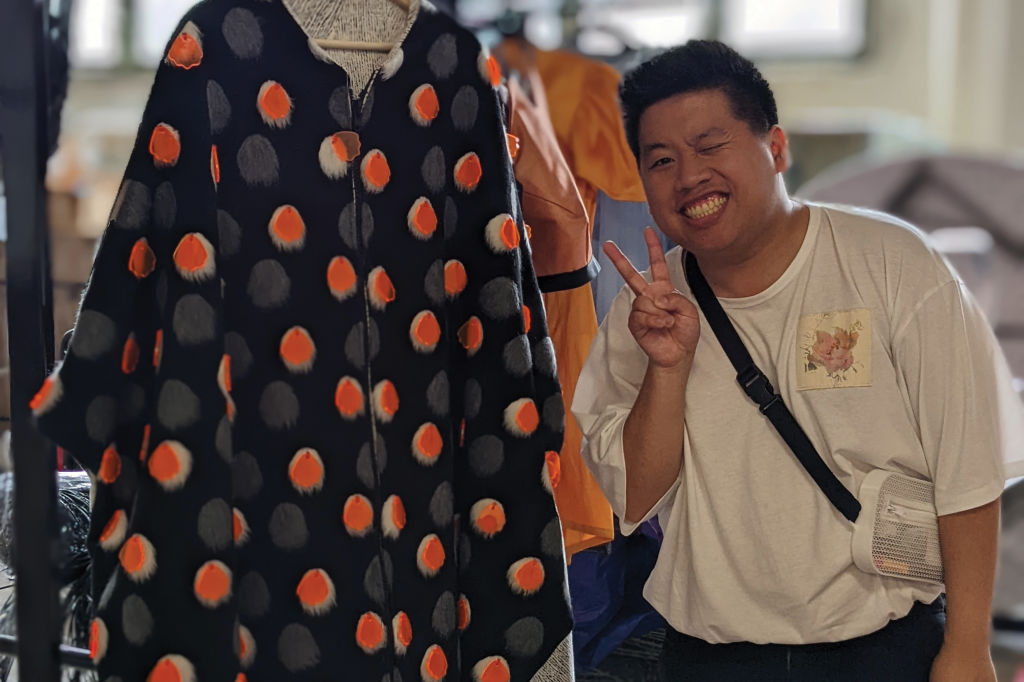Culture
 Frank Huynh. Photo courtesy of subject.
Frank Huynh. Photo courtesy of subject.
Frank Huynh: The Next Gen of style Setters Taking Over the District
September 30, 2022 @ 12:00pm
D.C.’s got style. With everything from cute streetwear to tailored suits, plenty of people turn heads just walking down city streets. But who’s making their clothing, helping them decide what looks good and dreaming up the latest in fashion? It’s the designers of the city, the tailors, the entrepreneurs. Here is one of the 14 must-know figures in fashion from the DMV. Check out our October Issue for the full coverage.
Fashion designer at Lê Tâm
District Fray: You began as a self-taught designer. How did you get started? What were your early designs like?
Frank Huynh: My first models were a stuffed monkey and teddy bear. I learned the basics from watching my mom and aunties over the years who knew how to sew after working at alterations shops or curtain production factories. My first designs were awful. They were patchwork vests and dresses barely held together with uneven hand stitching. Even though they weren’t the most couture designs, it was enough to make me think, ‘Hm, if I can make clothing for stuffed animals, why can’t I do it for people?’
How did getting a degree in costume design then affect your work?
Deciding to pursue a minor in costume design was the best thing that could’ve happened to my design career. Through the classes, I learned how to properly flat patterns and drape my designs. I learned all the various hand stitches and techniques needed to finish garments, how to fit and alter garments to perfectly form to a body and also about the various clothing silhouettes throughout history.
On your website, you say you infuse clothing with aspects of your cultural heritage. What does that look like in practice?
I’m a proud first-generation Vietnamese American, so I try to subtly use silhouettes or fabrics you would find in Vietnam, but in a modern way. For example, I’ve re-interpreted the áo dài, the traditional Vietnamese national garment usually consisting of a form-fitting silk tunic with two side slits and pants worn underneath, a countless number of times. In one collection, I made the áo dài floor length and moved the slit to the center back to keep the shape but eliminate the need for trousers underneath. In another collection, I made an áo dài with silk dupioni to give it a more structured look, but had it fall above the knee and placed a full silk chiffon skirt underneath instead. Traditional Vietnamese garments have changed over time, and I would like to be part of the group of designers helping with the continual evolution in this next century.
byletam.com // @fashionsbyletam
Enjoy this piece? Consider becoming a member for access to our premium digital content. Support local journalism and start your membership today.







